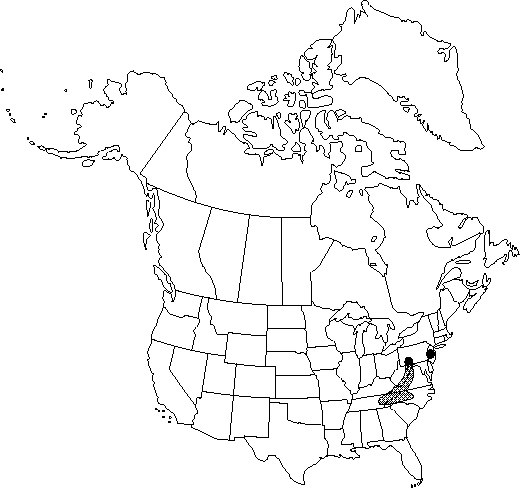Difference between revisions of "Dicentra eximia"
Fl. New York 1: 46. 1843.
FNA>Volume Importer |
imported>Volume Importer |
||
| (6 intermediate revisions by 2 users not shown) | |||
| Line 12: | Line 12: | ||
|label=Endemic | |label=Endemic | ||
}} | }} | ||
| − | |basionyms={{Treatment/ID/ | + | |basionyms={{Treatment/ID/Basionym |
|name=Fumaria eximia | |name=Fumaria eximia | ||
|authority=Ker Gawler | |authority=Ker Gawler | ||
| + | |rank=species | ||
| + | |publication_title=Bot. Reg. | ||
| + | |publication_place=1: plate 50. 1815 | ||
}} | }} | ||
|synonyms={{Treatment/ID/Synonym | |synonyms={{Treatment/ID/Synonym | ||
|name=Bicuculla eximia | |name=Bicuculla eximia | ||
|authority=(Ker Gawler) Millspaugh | |authority=(Ker Gawler) Millspaugh | ||
| + | |rank=species | ||
}} | }} | ||
|hierarchy=Fumariaceae;Dicentra;Dicentra eximia | |hierarchy=Fumariaceae;Dicentra;Dicentra eximia | ||
| Line 34: | Line 38: | ||
|elevation=100-1700 m | |elevation=100-1700 m | ||
|distribution=Md.;N.J.;N.C.;Pa.;Tenn.;Va.;W.Va. | |distribution=Md.;N.J.;N.C.;Pa.;Tenn.;Va.;W.Va. | ||
| − | |discussion=<p>The natural range of Dicentra eximia extends along the Appalachians from North Carolina and Tennessee to Maryland and Pennsylvania. It is frequently cultivated and sometimes escapes outside that area, but it evidently has not become truly naturalized beyond it. Such garden escapes, perhaps including misidentified plants of D. formosa, also widely cultivated, are almost surely the basis for reports of D. eximia from Illinois, Michigan, Ohio, New York, Connecticut, and Vermont.</p><!-- | + | |discussion=<p>The natural range of <i>Dicentra eximia</i> extends along the Appalachians from North Carolina and Tennessee to Maryland and Pennsylvania. It is frequently cultivated and sometimes escapes outside that area, but it evidently has not become truly naturalized beyond it. Such garden escapes, perhaps including misidentified plants of <i>D. formosa</i>, also widely cultivated, are almost surely the basis for reports of <i>D. eximia</i> from Illinois, Michigan, Ohio, New York, Connecticut, and Vermont.</p><!-- |
| − | --><p>Several patented hybrids between Dicentra eximia and D. formosa are sold in nurseries.</p> | + | --><p>Several patented hybrids between <i>Dicentra eximia</i> and <i>D. formosa</i> are sold in nurseries.</p> |
|tables= | |tables= | ||
|references= | |references= | ||
| Line 44: | Line 48: | ||
-->{{#Taxon: | -->{{#Taxon: | ||
name=Dicentra eximia | name=Dicentra eximia | ||
| − | |||
|authority=(Ker Gawler) Torrey | |authority=(Ker Gawler) Torrey | ||
|rank=species | |rank=species | ||
| Line 59: | Line 62: | ||
|publication year=1843 | |publication year=1843 | ||
|special status=Endemic | |special status=Endemic | ||
| − | |source xml=https:// | + | |source xml=https://bitbucket.org/aafc-mbb/fna-data-curation/src/2e0870ddd59836b60bcf96646a41e87ea5a5943a/coarse_grained_fna_xml/V3/V3_342.xml |
|genus=Dicentra | |genus=Dicentra | ||
|species=Dicentra eximia | |species=Dicentra eximia | ||
Latest revision as of 21:48, 5 November 2020
Plants perennial, scapose, from elongate, stout, scaly rhizomes. Leaves (10-)20-35(-55) × (5-)10-15(-30) cm; blade with 4 orders of leaflets and lobes; abaxial surface glaucous; penultimate lobes lanceolate to oblong or ovate, (6-)10-20(-35) × 2-5 mm. Inflorescences paniculate, 5-many-flowered, usually exceeding leaves, (20-)30-45(-65) cm; bracts lanceolate, 3-6(-11) × 1-2 mm, apex acuminate. Flowers pendent; sepals reniform, 2-5(-8) × 1.5-4 mm, apex acuminate; petals rose-purple to pink, rarely white; outer petals (15-)20-25(-30) × 2-5 mm, reflexed portion 4-8 mm; inner petals (15-)18-22(-25) mm, blade 2-4 mm, claw linear-lanceolate, 5-10(-14) × 1-2.5 mm, crest 1-3 mm diam., exceeding apex by 2-3 mm; filaments of each bundle connate at base and near apex, distinct in between, distinct portion of median filament forming loop that lies within base of outer petal; nectariferous tissue borne toward base of median filament; style 7-14 mm; stigma 2-horned. Capsules oblong to ovoid, (15-)18-22(-27) × ca. 4 mm. Seeds slightly reniform, ca. 2 mm diam., finely reticulate, elaiosome present. 2n = 16.
Phenology: Flowering mid spring–early fall.
Habitat: Dry to moist, rocky, mountain woods, often in rock crevices at cliff bases
Elevation: 100-1700 m
Distribution

Md., N.J., N.C., Pa., Tenn., Va., W.Va.
Discussion
The natural range of Dicentra eximia extends along the Appalachians from North Carolina and Tennessee to Maryland and Pennsylvania. It is frequently cultivated and sometimes escapes outside that area, but it evidently has not become truly naturalized beyond it. Such garden escapes, perhaps including misidentified plants of D. formosa, also widely cultivated, are almost surely the basis for reports of D. eximia from Illinois, Michigan, Ohio, New York, Connecticut, and Vermont.
Several patented hybrids between Dicentra eximia and D. formosa are sold in nurseries.
Selected References
None.